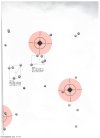65WSM
Well-Known Member
I handload from .17 Fireball for ground squirrels to .35 Whelen for my Alaska "fishing" rifle. Cleaning really matters for .17 and .20 caliber rifles. I love my .204 Ruger Shilen barreled AR-15 for the first 35 rounds. I believe that the .20 PPC is the most accurate Twenty cartridge. I have two .20 BRs (one just got a 17-4 PH stainless Bartlein 7 twist replacement that is out for nitrocarburizing).
I have just proved to myself again that nitrocarburized barrels need a lot less brushing and patches than naked stainless barrels. I also shoot only HBN coated bullets. You have to monitor your cleaning with a bore scope. Speaking with a 90 year old retired riflesmith, he told me that fewer than one in ten of the shooters with custom barreled rifles actually shoots clean barrels.
Carbon cleaning: It is important to clean as soon as possible after shooting. Keeping the carbon layer in the barrel soft makes it easier to remove than hardened carbon days later. Carbon cleaners with "aromatic" solvents like tolulene and xylene are the most agressive. For years the carburator cleaners from Mercury Outboards and GM were the best carbon removers. Sinclair (now part of Brownells) used to carry the Mercury cleaner. These chemicals have mostly gone away. Walmart still carries "carburator and air intake cleaner" aerosol at $2 a can. Well worth the money. I have just started using Free All and it seems promising. Hoppes has a pump spray called "Elite High Performance" with a four ingredient alcohol blend that is very handy for squirting patches speared on the jag. I am still testing it. It also is available at Walmart for $8 a bottle.
Copper cleaning. "Sweets" has the highest concentration of ammonia and converts the copper metal to the slightly soluble blue cupric ion that you see on your patches. With HBN coated bullets, I can use Patch Out Wipe Out Shooters Choice and it is adequate as a cleaner, even in .17 caliber. Your needs might be greater.
I use Opossum Hollow Delrin plastic bore guides.
I have just proved to myself again that nitrocarburized barrels need a lot less brushing and patches than naked stainless barrels. I also shoot only HBN coated bullets. You have to monitor your cleaning with a bore scope. Speaking with a 90 year old retired riflesmith, he told me that fewer than one in ten of the shooters with custom barreled rifles actually shoots clean barrels.
Carbon cleaning: It is important to clean as soon as possible after shooting. Keeping the carbon layer in the barrel soft makes it easier to remove than hardened carbon days later. Carbon cleaners with "aromatic" solvents like tolulene and xylene are the most agressive. For years the carburator cleaners from Mercury Outboards and GM were the best carbon removers. Sinclair (now part of Brownells) used to carry the Mercury cleaner. These chemicals have mostly gone away. Walmart still carries "carburator and air intake cleaner" aerosol at $2 a can. Well worth the money. I have just started using Free All and it seems promising. Hoppes has a pump spray called "Elite High Performance" with a four ingredient alcohol blend that is very handy for squirting patches speared on the jag. I am still testing it. It also is available at Walmart for $8 a bottle.
Copper cleaning. "Sweets" has the highest concentration of ammonia and converts the copper metal to the slightly soluble blue cupric ion that you see on your patches. With HBN coated bullets, I can use Patch Out Wipe Out Shooters Choice and it is adequate as a cleaner, even in .17 caliber. Your needs might be greater.
I use Opossum Hollow Delrin plastic bore guides.

